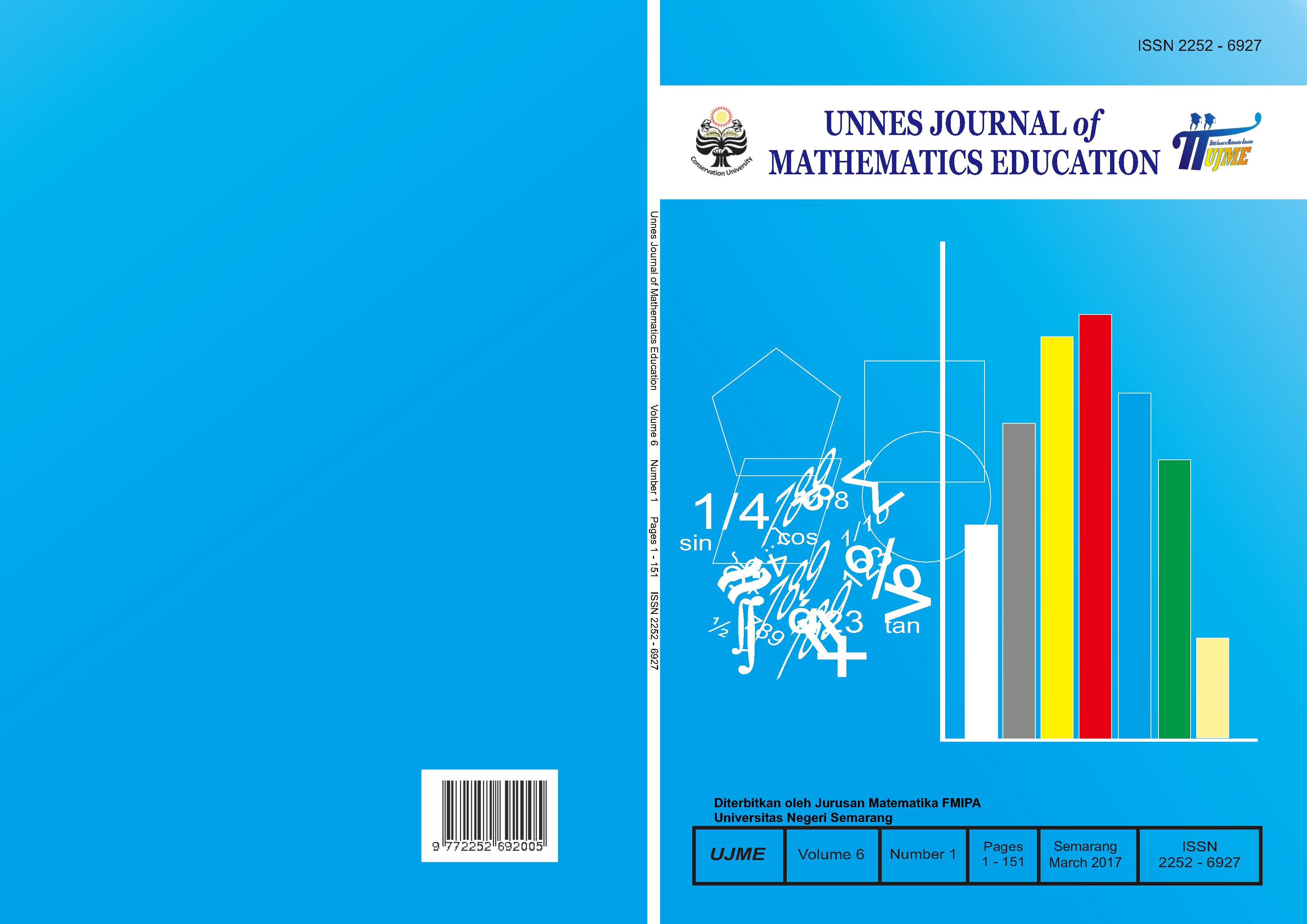Analysis of Mathematical Problem Solving Ability Based on Student Learning Stages Polya on Selective Problem Solving Model
##plugins.themes.academic_pro.article.main##
Abstract
The purpose of this study was to determine the thoroughness of VII grade students who taught by the Selective Problem Solving (SPS) model and to know the description of students' mathematical problem solving ability based on Polya's stages on SPS learning model. Data collection method used the method of participant observation, tests, interviews, and documentation.The method used in this study is a mixed methods with sequential explanatory design where the first stage of research used quantitative methods, and the second stage used qualitative methods. The subjects of this research are six students from VII D grade of SMPN 41 Semarang consist of: two students from top group, two students from middle group, and two students from lacking group in mathematical problem solving ability test. The results showed that: (1) mathematics learning in VII grade with SPS models can achieve learning completeness; (2) the students from top group were able to solve the problem through Polya's stages except looking back stage; (3) the students of middle group were able to understand the problem well, but have not been able to carry out thoroughly stage of planning, implementing problemÂsolving, and looking back; (4) the students from less group have not been able to solve the problem through the Polya's stage which includes understanding the problem, devising a plan, carrying out the plan, and looking back.
##plugins.themes.academic_pro.article.details##
References
Arikunto, S. (2013). DasarÂDasar Evaluasi Pendidikan (Edisi 2). Jakarta: Bumi Aksara.
Balitbang. (2013). Hasil Ujian Nasional Tahun Pelajaran 2012/2013 untuk Perbaikan Mutu Pendidikan. Jakarta: Badan Penelitian dan Pengembangan Pendidikan.
Depdiknas. (2006). Permendiknas Nomor 22 Tahun 2006 Tentang Standar Isi. Jakarta: Depdiknas.
Lestanti, M.M., Isnarto, & Supriyono. (2016). Analisis Kemampuan Pemecahan Masalah Ditinjau dari Karakteristik Cara Berpikir Siswa dalam Model Problem Based Learning. Unnes Journal of Mathematics Education, Vol 5 (1): 16-23.
Mahmudi, A. (2010). Tinjauan Asosiasi antara Kemampuan Pemecahan Masalah Matematis dan Disposisi Matematis. Makalah dipresentasikan pada Seminar Nasional Pendidikan Matematika, UNY Yogyakarta, 17 April.
Polya, G. (1973). How to Solve It. New Jersey: Princeton University Press..
Republik Indonesia. (2003). UndangÂundang Nomor 20 Tahun 2003 tentang sistem pendidikan nasional. Lembaran Negara RI Tahun 2003, No. 78. Sekretaris Negara. Jakarta. Tersedia di http://akhmadsudrajat.files.wordpress. com/2009/04/undang-undang-no-20tentang-sisdiknas.pdf. [diakses 28-102015]
Sak, U. (2011). Selective Problem Solving (SPS): A Model for Teaching Creative Problem-Solving. Gifted Education International, Vol 27: 349-357.
